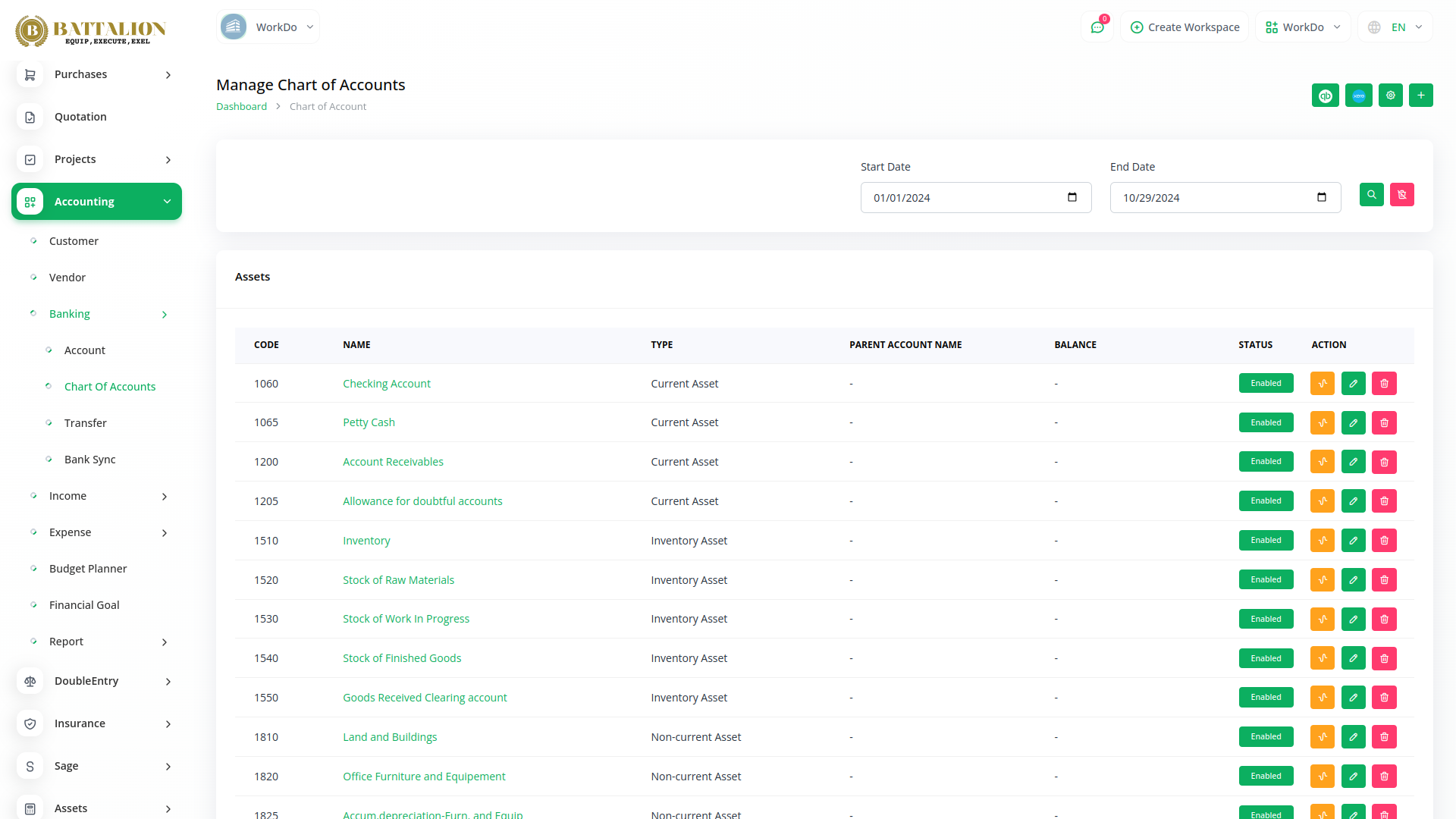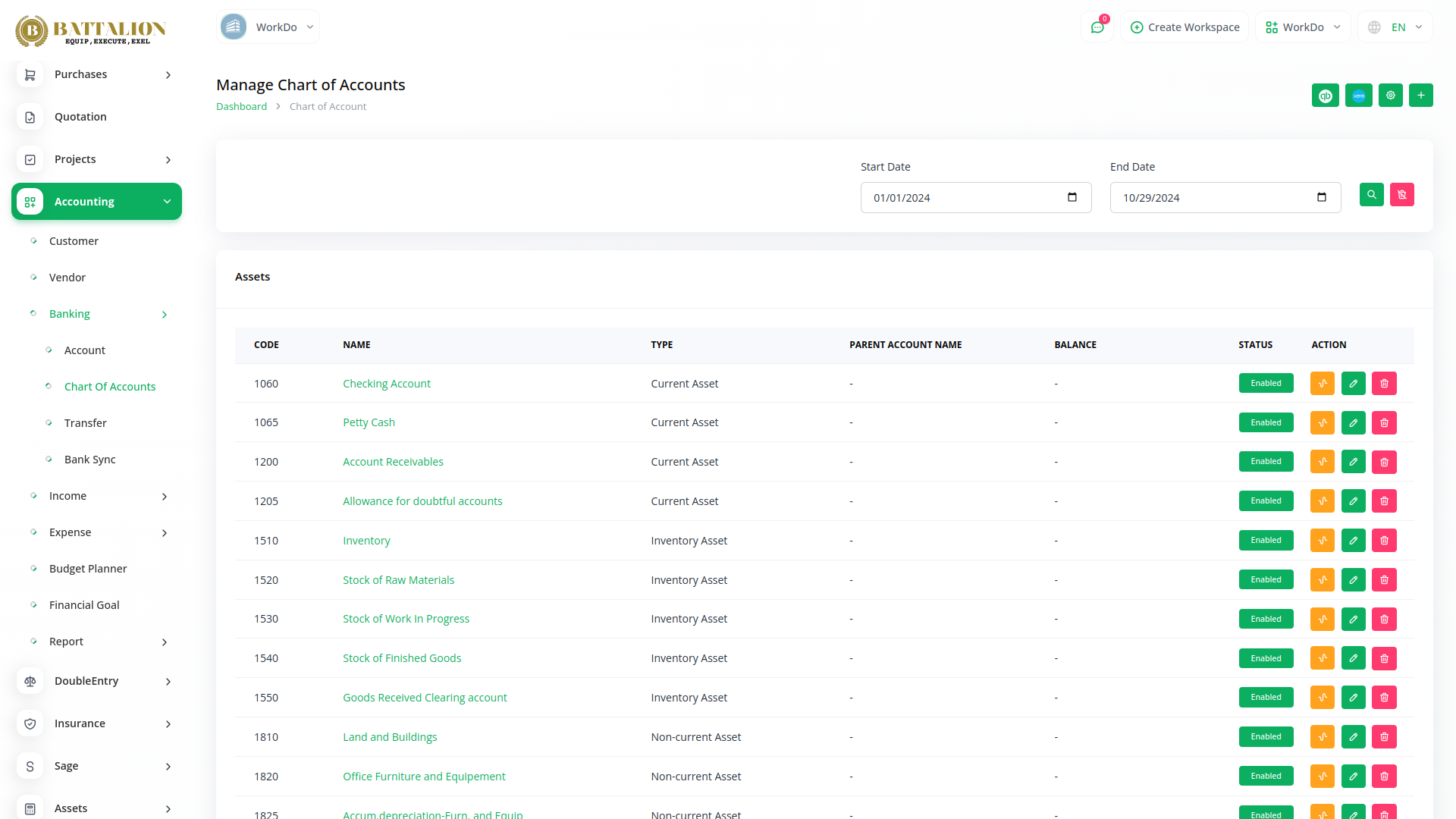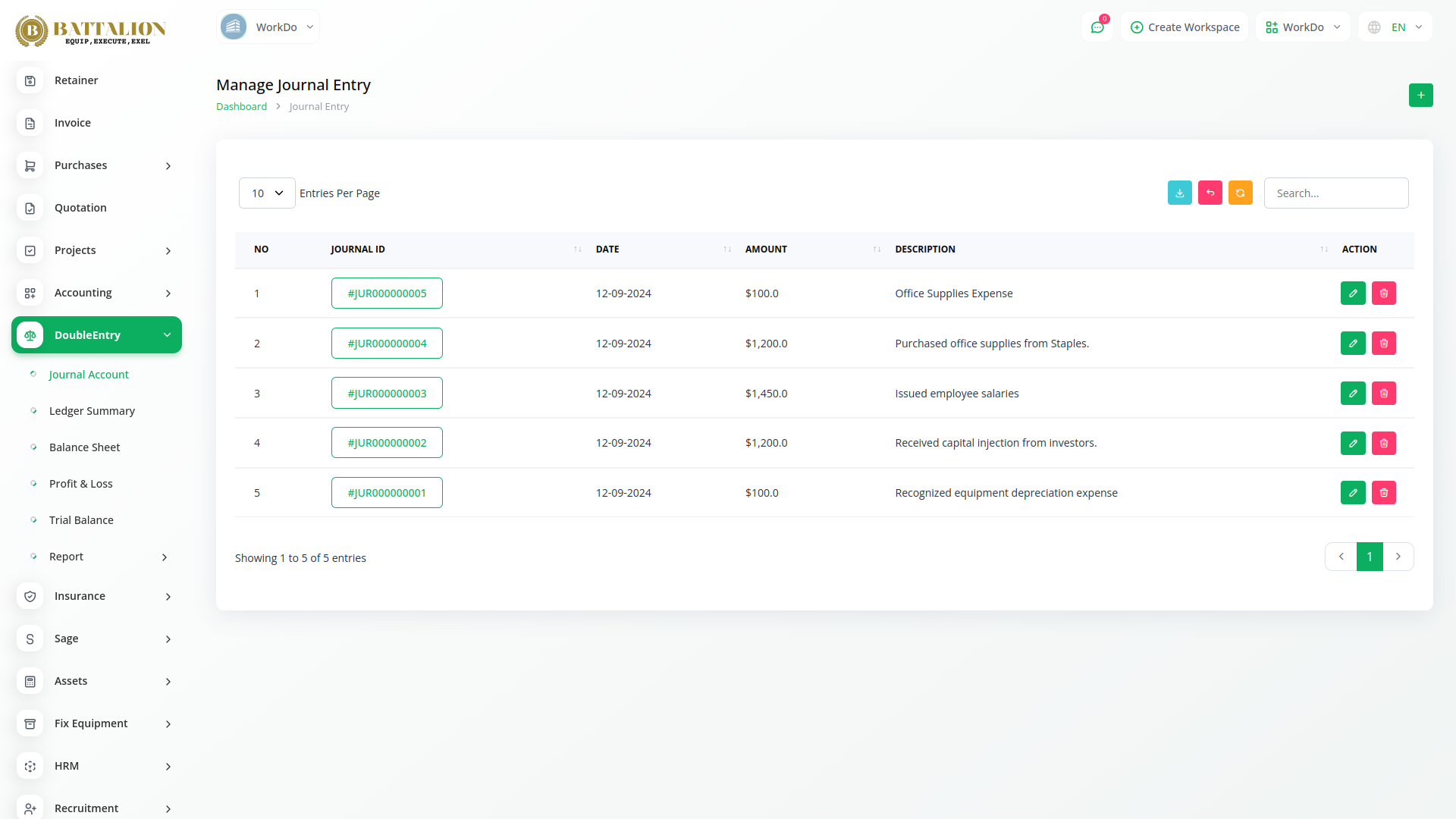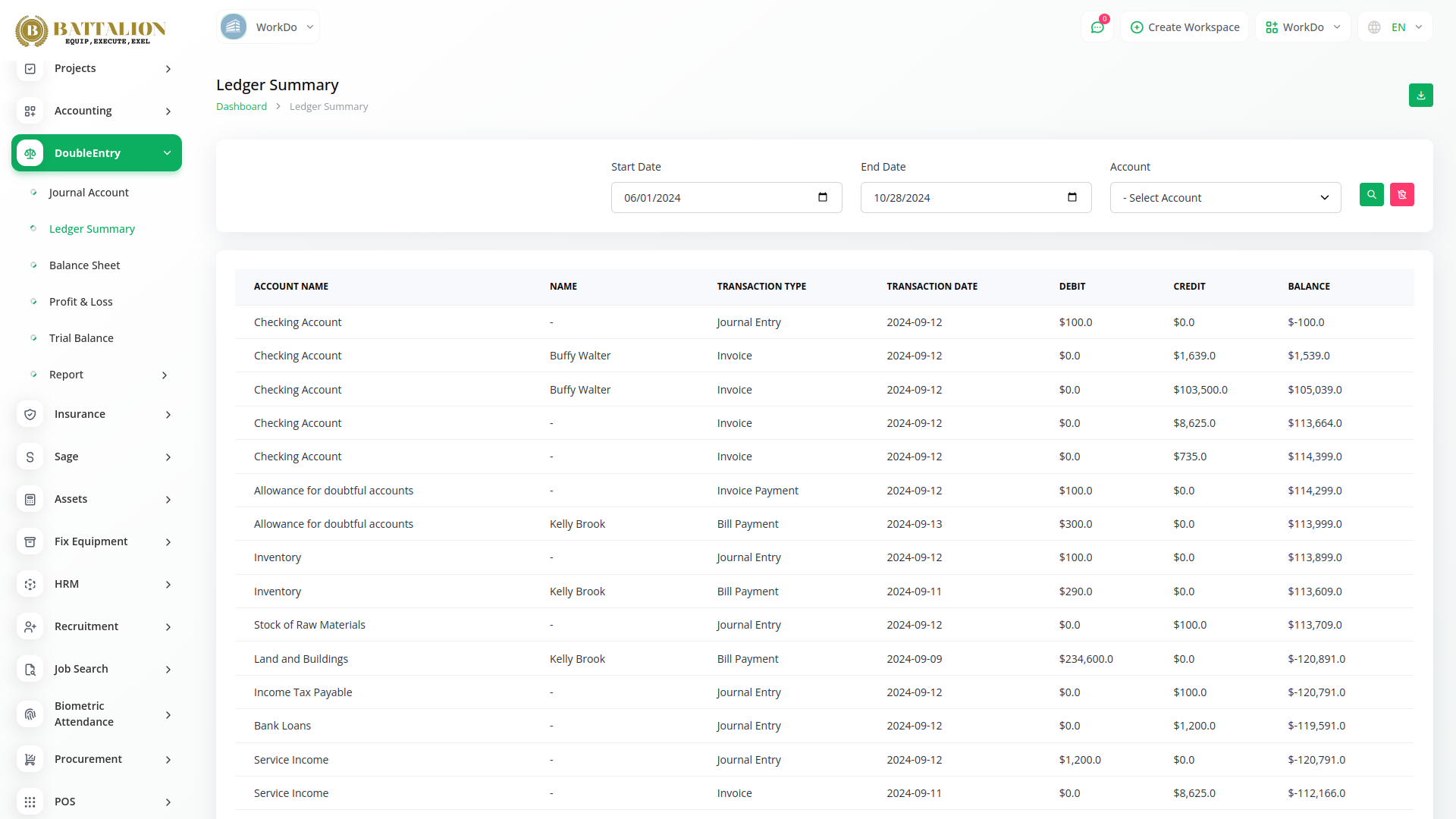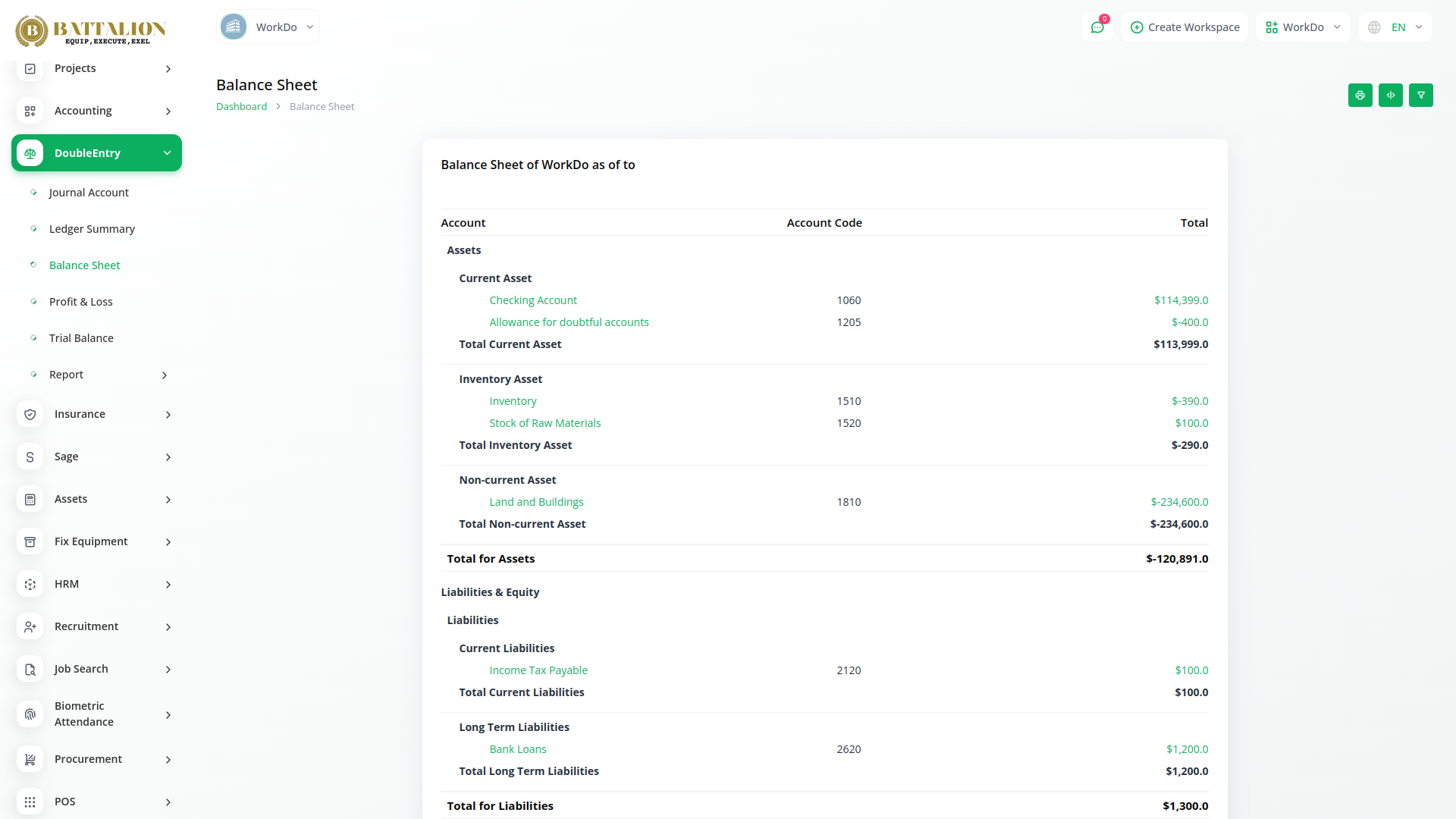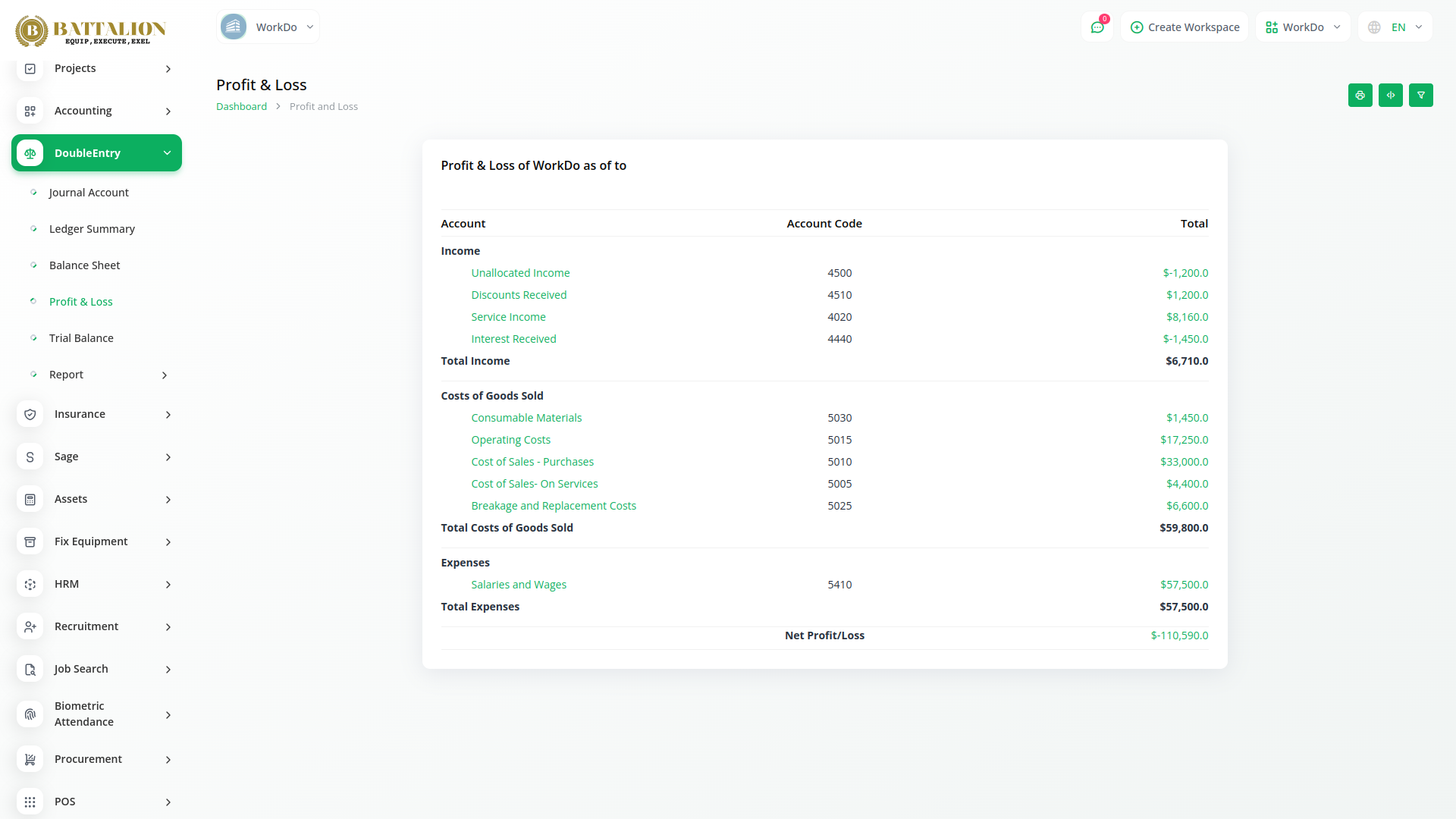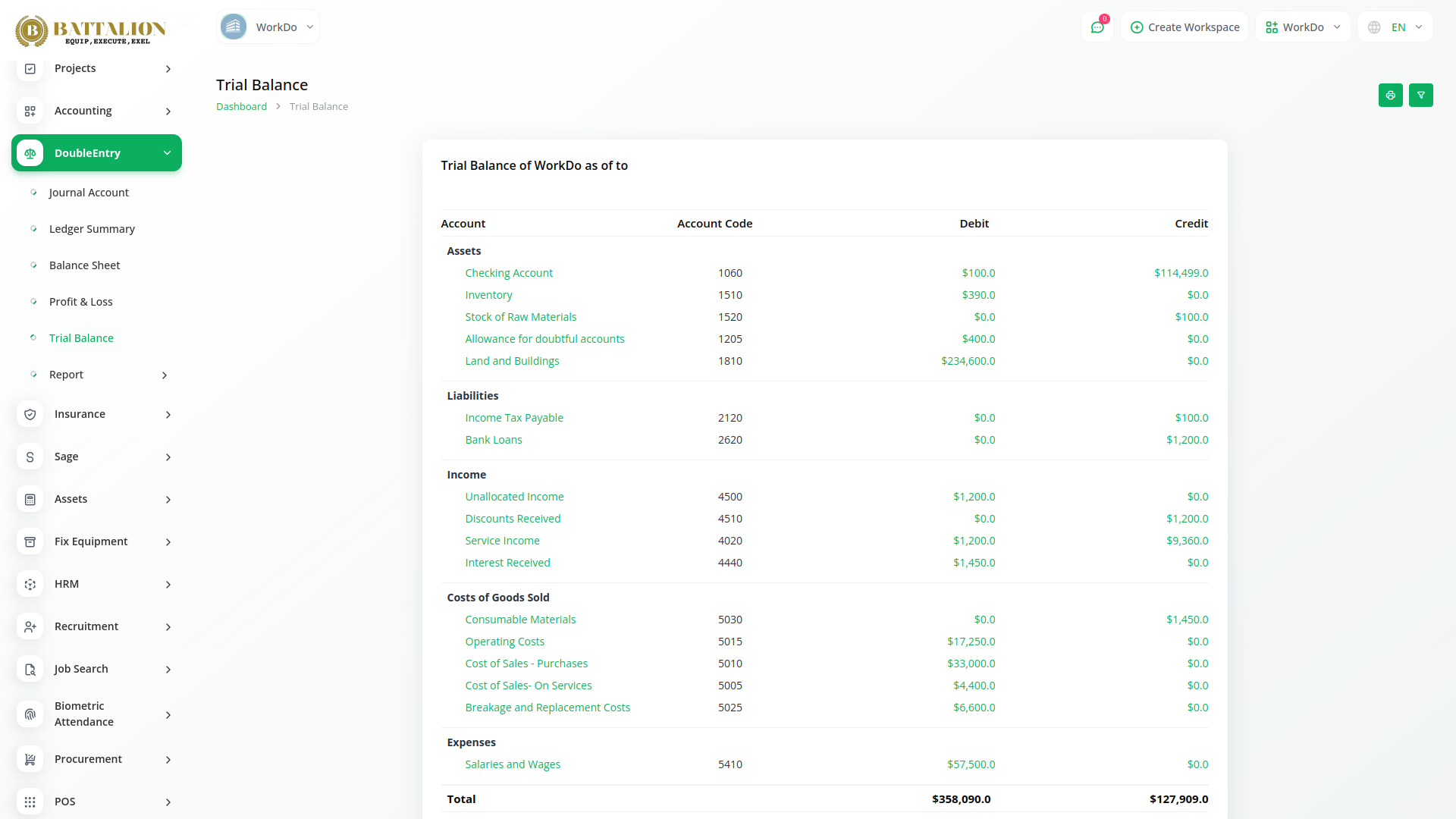Double Entry
Double Entry accounting is a core financial method that records every transaction in two corresponding accounts-a debit and a credit. This dual-entry system ensures that the accounting equation (Assets = Liabilities + Equity) always remains balanced.
By impacting both sides of the ledger, Double Entry accounting enhances the accuracy, transparency, and reliability of financial records. It enables businesses to track financial performance, identify discrepancies, and meet compliance with recognized accounting standards.
Dual Accounting Principle
Double Entry Accounting is essential for maintaining balanced and accurate financial records. By recording every transaction with both a debit and a credit entry, it provides a complete and transparent view of a company’s financial activities.
Maintain Balance And Accuracy in Accounting
The Double Entry system supports the integrity of the accounting equation (Assets = Liabilities + Equity), helping businesses identify discrepancies, streamline audits, and ensure financial compliance.
An Accounting Journal is a foundational component of the Double Entry system. It is where individual financial transactions are first recorded before being posted to the general ledger. Each entry includes a debit and a corresponding credit, ensuring that the accounting equation stays balanced.
To create an accounting journal entry: Identify the transaction – Understand the nature and purpose of the transaction. Determine affected accounts – Identify which accounts will be debited and which will be credited. Record the entry – Input the debit and credit values into the journal, clearly stating the date and description. Verify balance – Ensure total debits equal total credits. Post to general ledger – Transfer the journal entry to the appropriate ledger accounts for reporting and analysis.
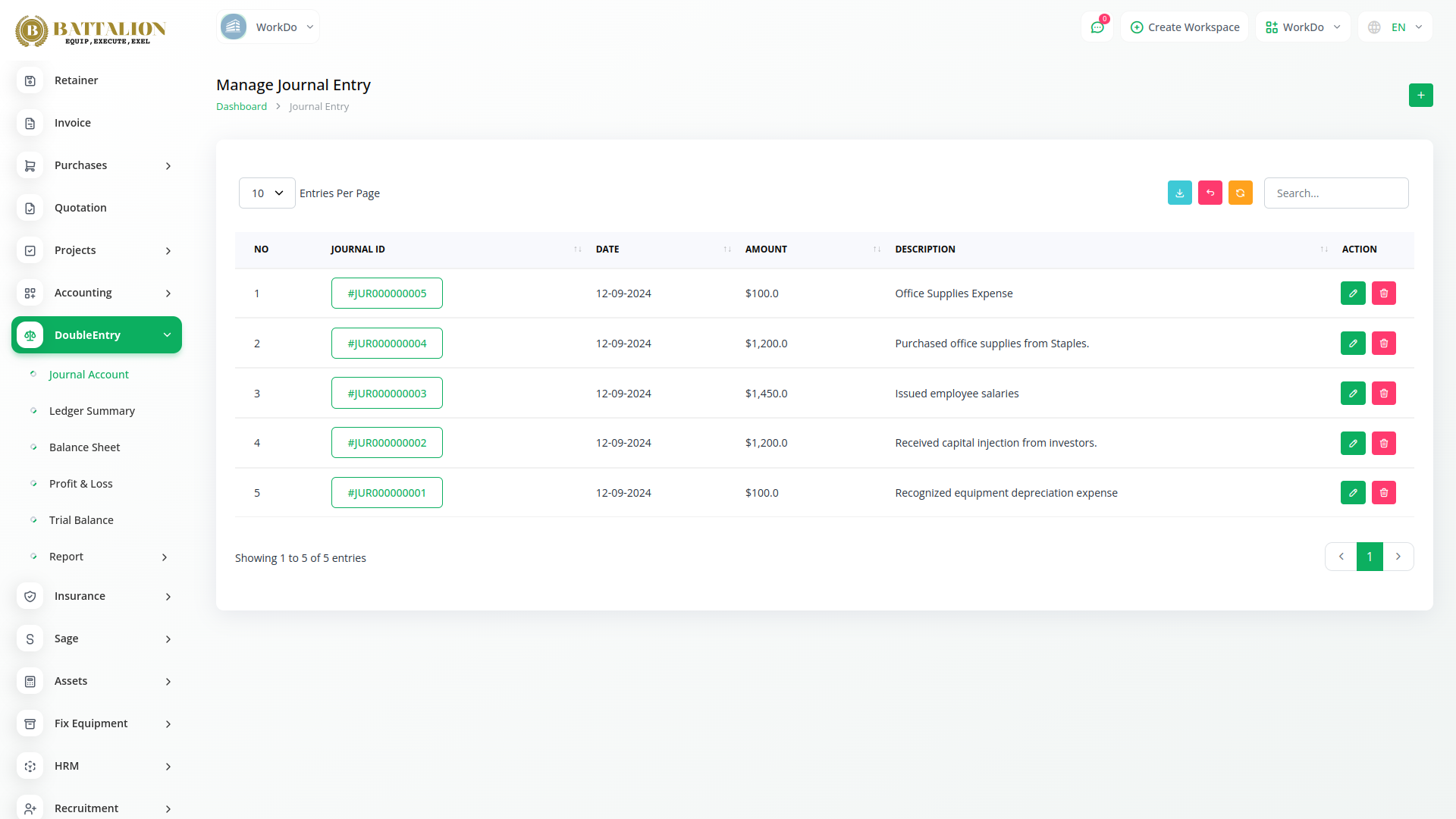
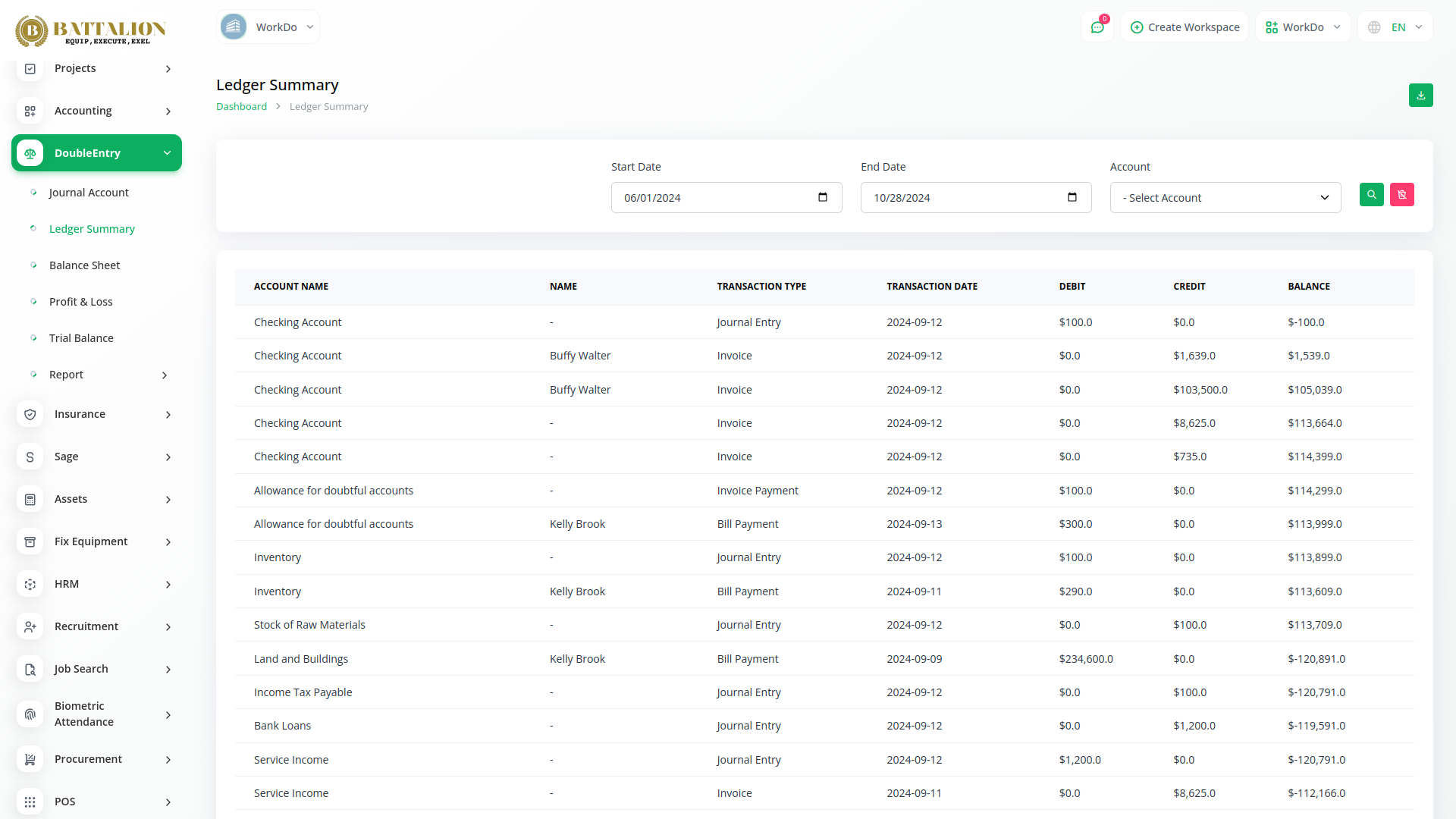
Tools for keeping an accurate general ledger
Maintaining a precise general ledger is essential for reliable financial reporting. A ledger account tracks all transactions related to a specific financial category-such as cash, revenue, or expenses-within the general ledger.
Each entry in a ledger account includes:
Date of the transaction
Transaction reference or number
Brief description or memo
This detailed structure allows business owners, bookkeepers, and accountants to easily trace the origin and purpose of each transaction, ensuring accuracy, accountability, and transparency.
Balance Sheet
A Balance Sheet offers a clear snapshot of a company's financial position at a specific point in time by detailing its assets, liabilities, and equity.
Assets represent what the company owns
Liabilities reflect what the company owes
Equity indicates the owner’s stake in the business
The balance sheet is governed by the fundamental accounting equation:
Assets = Liabilities + Equity
This equation ensures that every entry remains balanced, providing a reliable framework for financial reporting, decision-making, and compliance.
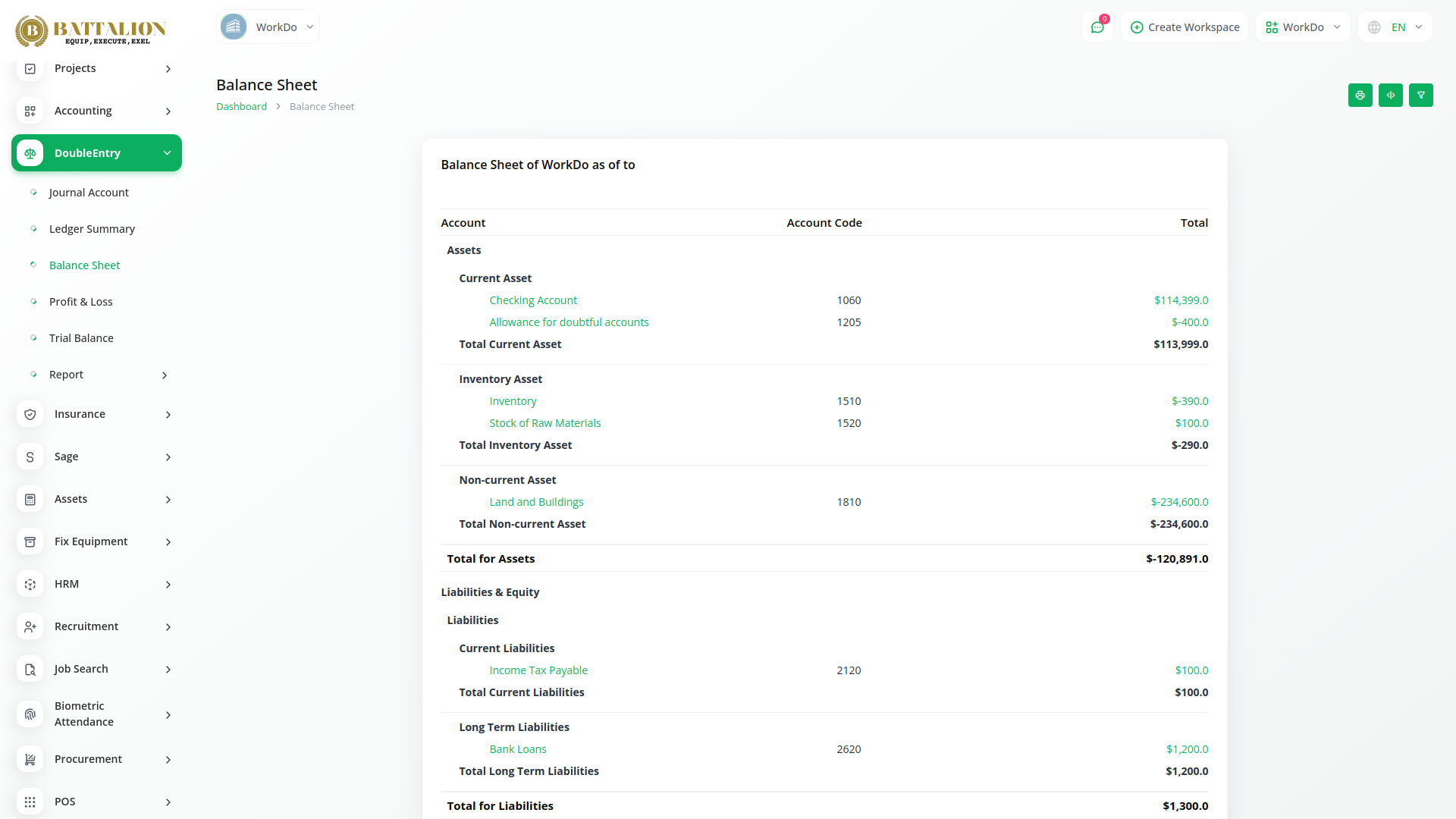
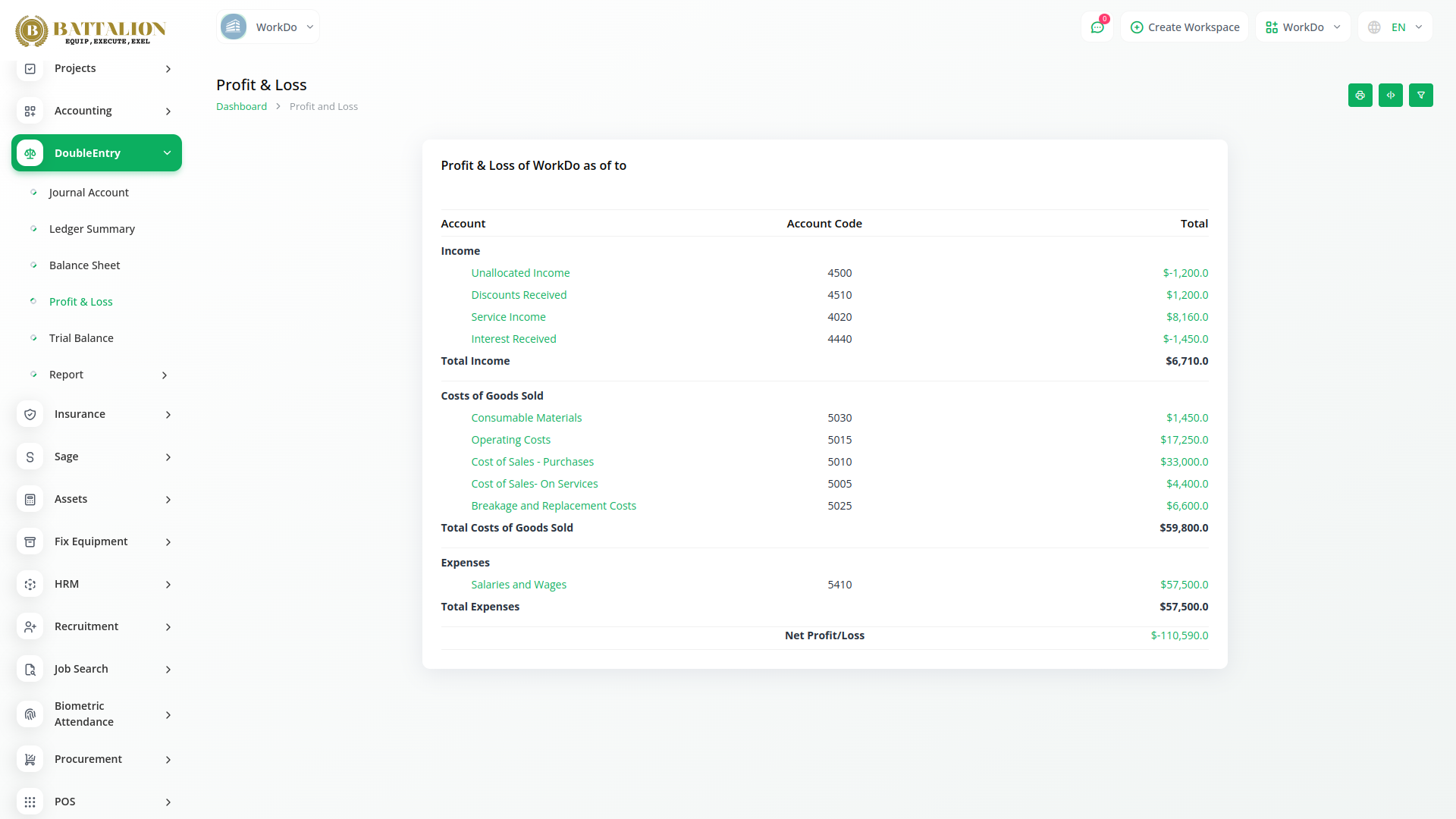
Profit and Loss (P&L) Statement
The Profit and Loss Statement, also known as the Income Statement, provides a comprehensive view of a company’s financial performance over a defined time period.
It begins with total revenue from sales and subtracts various expenses, including:
Cost of Goods Sold (COGS)
Operating expenses
Interest payments
Taxes
The final result is the net profit (or net loss), which reflects the company’s bottom-line earnings after accounting for all costs. This statement is essential for evaluating profitability, operational efficiency, and overall financial health.
Trial Balance
A Trial Balance is an essential accounting worksheet that lists all general ledger accounts and their respective debit or credit balances at a specific point in time.
Its primary purpose is to verify that total debits equal total credits, ensuring the integrity of the double entry accounting system. By reviewing balances across key categories-such as assets, liabilities, equity, revenue, expenses, gains, and losses-the trial balance helps detect posting errors before generating formal financial statements.
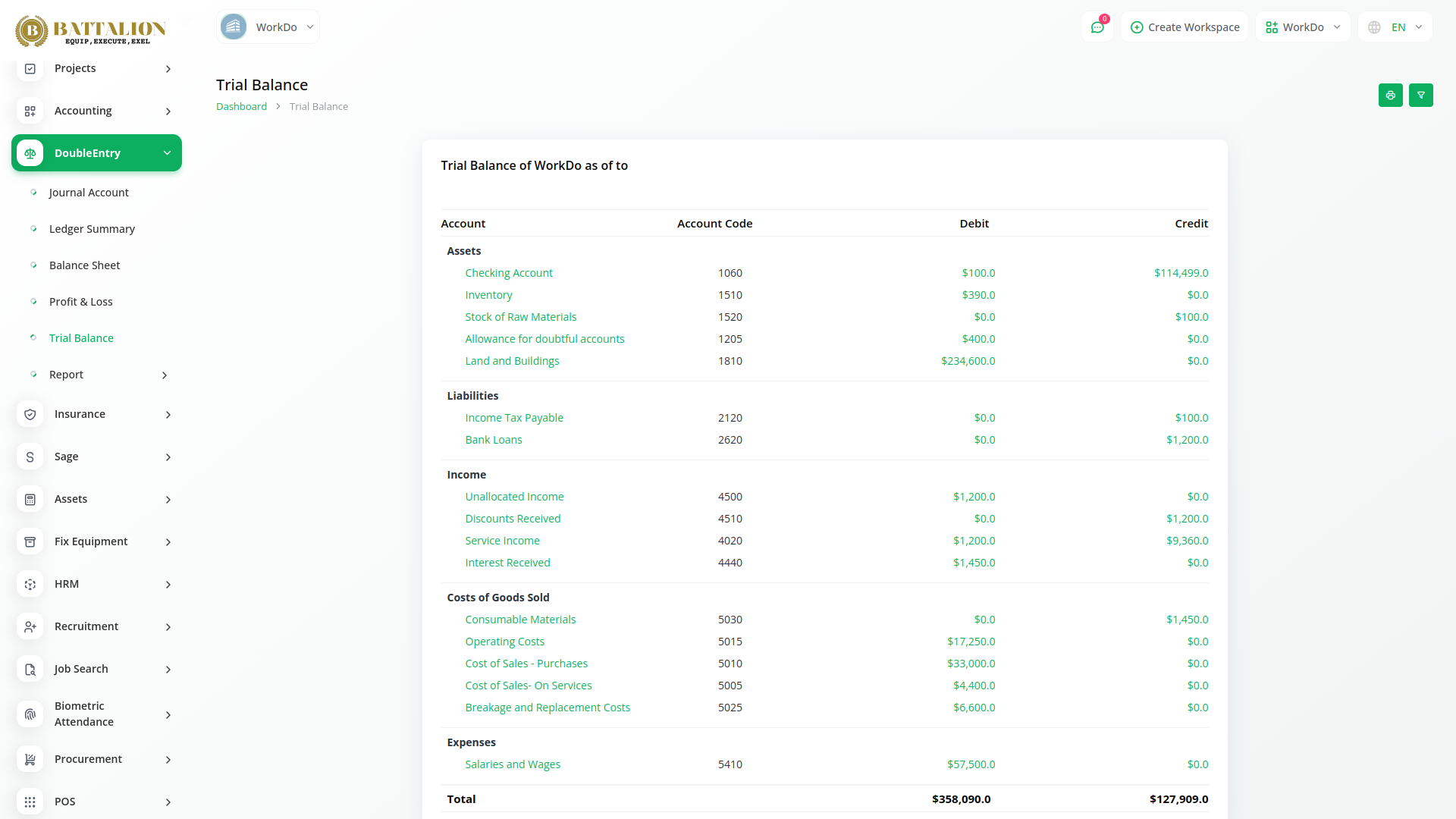
Why choose dedicated modules for Your Business?
With Battalion, you can conveniently manage all your business functions from a single location.
Empower Your Workforce with Battalion
Access over Premium Add-ons for Accounting, HR, Payments, Leads, Communication, Management, and more, all in one place!
- Pay-as-you-go
- Unlimited installation
- Secure cloud storage
Why choose dedicated modules for Your Business?
With Battalion, you can conveniently manage all your business functions from a single location.


